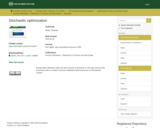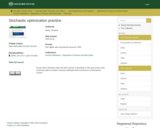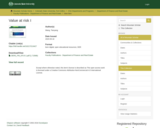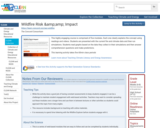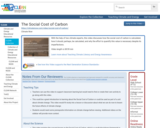
With the help of two climate experts, this video discusses how the social cost of carbon is calculated, how it should, perhaps, be calculated, and why the effort to quantify this value is necessary despite its imperfections.
- Subject:
- Applied Science
- Career and Technical Education
- Economics
- Environmental Science
- Environmental Studies
- Physical Science
- Political Science
- Social Science
- Material Type:
- Diagram/Illustration
- Reading
- Provider:
- CLEAN: Climate Literacy and Energy Awareness Network
- Provider Set:
- CLEAN: Climate Literacy and Energy Awareness Network
- Author:
- Climate Now
- Date Added:
- 07/25/2022
